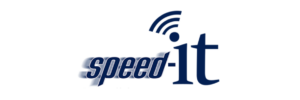DB Challenge
Team Based Database Query Challenge for Real Business Problems
Updated March 11, 2015 by Christian Valeen Chiu
I. OBJECTIVES
-
Encourage students to improve critical thinking;
-
Expose students to real world applications of database queries;
-
Provide students with an opportunity to work in a team towards a common goal; and
-
Identify and recognize students who exhibit exemplary performance in db design and query competition.
II. TEAM COMPOSITION
- A representative of the sponsoring institution of higher education, typically a faculty member, must serve as or designate the team coach.
- The coach certifies the eligibility of contestants and serves as the official point-of-contact with the team prior to and during contest activities.
- A team may only have one coach and the coach cannot also be a contestant.
- The coach must fully register teams within the time set by the SPEED-IT Summit Head which is no later than 2 days before the contest.
- The coach is also the team’s official representative and the only authorized person to file a protest in behalf of the entrants.
- Teams failing to comply with any of these requirements will be ruled ineligible to compete.
- Only one (1) registered reserve may be substituted for every team. Such substitutions must be entered during the Registration by the competition director before the contest begins.
- Each team consists of three contestants.
- The contestants must be enrolled in a degree program at the sponsoring institution with at least a half-time load.
III. MECHANICS
-
A place shall be designated for all coaches.
-
The emcee shall introduce the contestants with their coaches, and members of the Board of Judges.
-
Running Scoreboard shall be displayed on the projected screen.
- Each team will be provided with a hardcopy of questions in separate sealed envelopes.
- When the organizer announces the start of the competition, only then can the sealed envelopes be opened.
- Each team may answer the questions in any order.
- As soon as the team finishes the problem, they will submit the text file containing the script using the PC^2 System, identifying what problem they are solving.
- The BOJ will run the script containing the (Table Dropping, Table Creation, Data Truncation, Stored Procedure Creation, and Database Select and Update Queries) in the same order they are sent against the ‘Secret Input Data’, only available to the BOJ. Note that the Input Data initially stored in each team’s database are different from the ‘Secret Input Data’ the BOJ has.
-
Answers with wrong spelling and capitalization are considered incorrect. Extra spaces before and after every data cell will be considered incorrect.
- When a team is able to solve the problem correctly, they will be notified through the PC^2 System and they will be given a Flag with the color corresponding to the problem solved.
- When the team has not successfully solved the problem, they will be informed through the PC^2 System and the 20 minute penalty will be accrued.
- The 20 minute penalty will only add to the total finished time IF the problem (where that penalty is incurred) is successfully solved.
- The Remarks for incorrect answers are as follows (but not limited to):
- Error: When the BOJ could not run the stored procedure because of a syntactical or a runtime error.
- Wrong Output: When there is a table cell that is not the same with the cell in the expected output, either wrong figure or wrong format.
- Time Limit Exceeded: When the stored procedure runs beyond the Limit Set for the problem; regardless of whether the answer is correct or incorrect.
-
The BOJ has the authority to override the answers on the answer keys.
-
In cases wherein a team encounters a technical problem, the team should get the attention of the emcee by raising their hand. The emcee will then allow their authorized representative or coach to attend to their concern.
IV. CONDUCT OF THE COMPETITION
- Solutions to problems submitted for judging are called runs. Each run is judged as accepted or rejected by a judge, and the team is notified of the results.
- Notification of accepted runs may be suspended at an appropriate time to keep the final results secret. Notification of rejected runs will continue until the end of the contest.
- A contestant may submit a claim of ambiguity or error in a problem statement by submitting a clarification request to a judge. If the judges agree that an ambiguity or error exists, a clarification will be issued to all contestants.
- Contestants are not to converse with anyone except members of their team and personnel designated by the competition director.
- While the contest is scheduled for a particular time length (typically three hours), the competition director has the authority to alter the length of the contest in the event of unforeseen difficulties. Should the contest duration be altered, every attempt will be made to notify contestants in a timely and uniform manner.
- A team may be disqualified by the competition director for any activity that jeopardizes the contest such as dislodging extension cords, unauthorized modification of contest materials, or distracting behavior.
- At least three problems will be posed. So far as possible, problems will avoid dependence on detailed knowledge of a particular applications area or particular contest language.
V. SCORING OF THE COMPETITION
- A problem is solved when it is accepted by the judges.
- The judges are solely responsible for accepting or rejecting submitted runs.
- In consultation with the judges, the Competition Director determines the winners of the competition. The competition director and judges are empowered to adjust for or adjudicate unforeseen events and conditions. Their decisions are final.
- Teams are ranked according to the most problems solved then by the least total time. For the purposes of awards, teams who solve the same number of problems are ranked by least total time. The total time is the sum of the time consumed for each problem solved. The time consumed for a solved problem is the time elapsed from the beginning of the contest to the submittal of the accepted run plus 20 penalty minutes for every rejected run for that problem regardless of submittal time. There is no time consumed for a problem that is not solved.
- In the event that there is a tie with the number of problems solved and the total submission time, those teams will be given another set of problems. The tie will be broken through the most number of problems solved then the least total time.
VI. DB CHALLENGE
- Number of Problems: Six (6)
- Competition Duration: Two (3) Hours
- Submission and Scoring Platform: PC^2 (http://www.ecs.csus.edu/pc2/)
VII. SUBJECT COVERAGE
- Information and Communications Technology – topics include data organization, database applications, logic design and switching, data structures, & algorithms.
- Business and Finance – topics include sales, pricing, accounting, finance.
- Mathematics – topics include Basic Math Concepts, Algebra, Trigonometry, Analytical Geometry, Discrete Math, Probability and Statistics, Calculus.
VIII. THE BOARD OF JUDGES (BOJ)
- The Board of Judges shall be composed of two (2) members who will convene to resolve any issue that may arise during the conduct of the competition. Members of the BOJ are professional or expert in the areas of information and communications technology, business and finance, and mathematics.
IX. FILING OF PROTESTS
-
Only the official coaches are allowed to file a protest.
- Protests shall be filed on official Protest Forms and shall be deliberated upon within 1 hour after the competition finished.
-
Protests made an hour after the competition finishes will not be entertained.
-
The decision of the BOJ is final and irrevocable.
X. PARTICIPANTS’ TOOLS
- 1 Computer Unit
- Windows XP
- Query Browser (MySQL Workbench 6.1.7 and SQLYog Community Edition 12.09)
- PC^2
- Problem Sets
- 10 Sheets of Paper
- 3 Ballpens
XI. JUDGES’ TOOLS
- 3 Computer Units
- Windows XP
- Query Browser (MySQL Workbench 6.1.7 and SQLYog Community Edition 12.09)
- PC^2
XII. ORGANIZERS’ TOOLS
- Two (2) LCD Projectors
- Two (2) Projector Screens
- Switch
- Database Server
- MySQL 5.1
- Administrator Unit
- Windows XP
- Query Browser (MySQL Workbench 6.1.7 and SQLYog Community Edition 12.09)
- PC^2
XIII. SAMPLE PROBLEM SET
- Sample Problems Updated July 8, 2014
- Sample Database Updated July 8, 2014
- DB Challenge 2014 Problem Set
XIV. CONTEST ORGANIZER


Leave a Reply